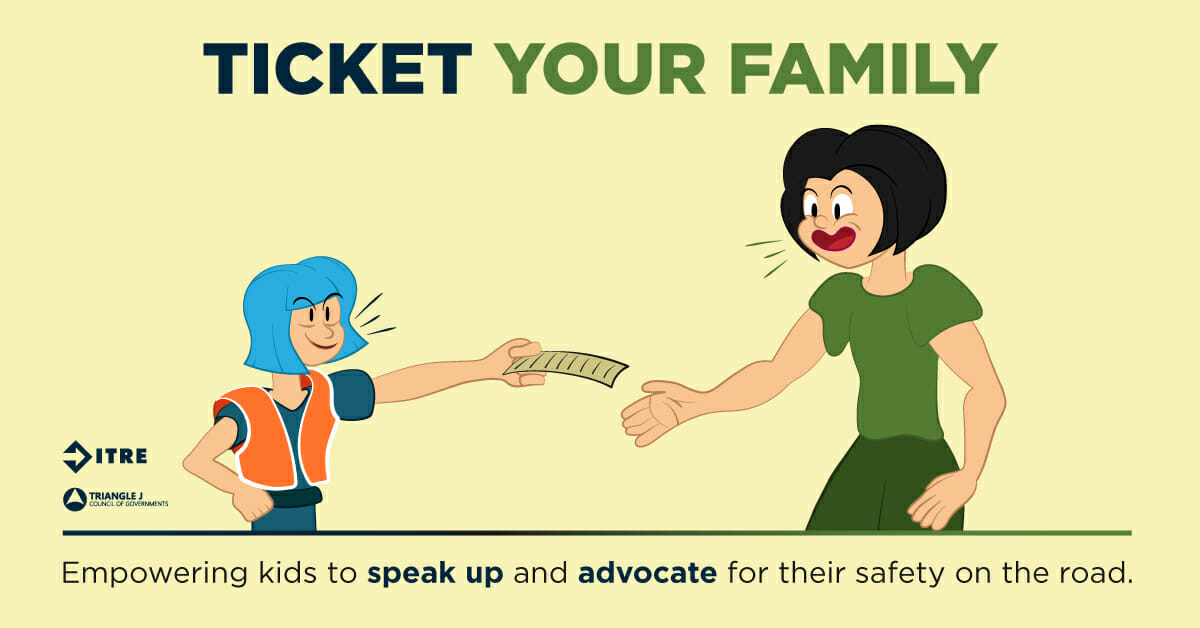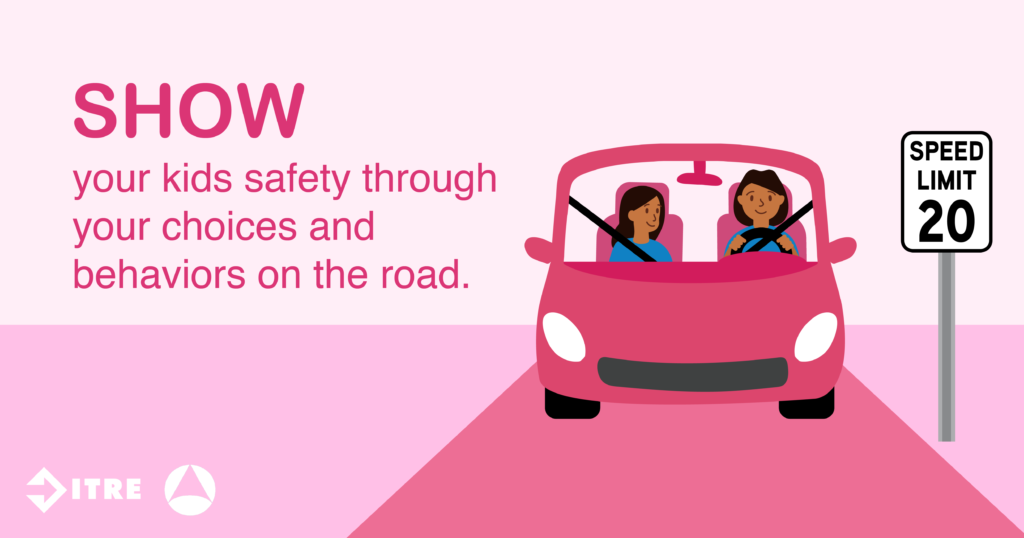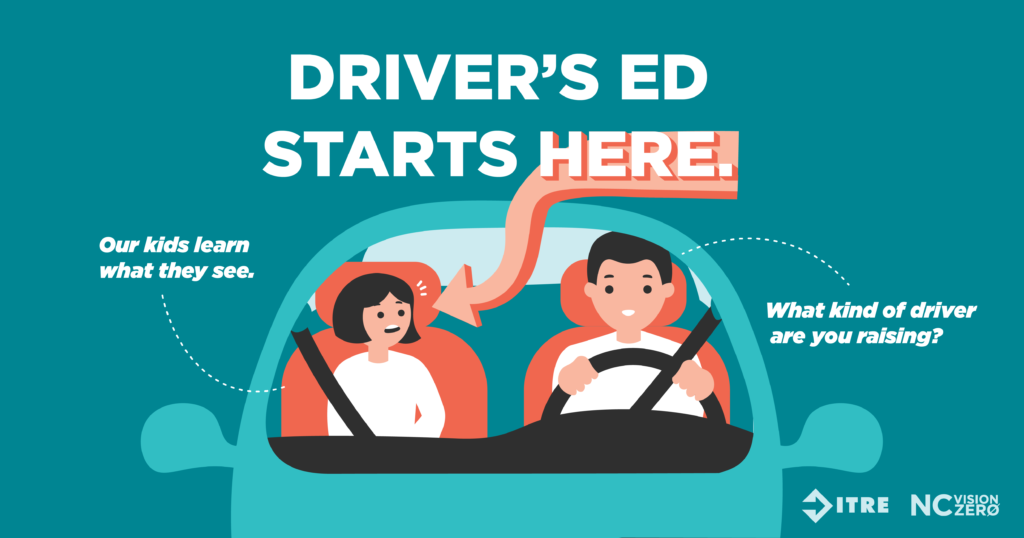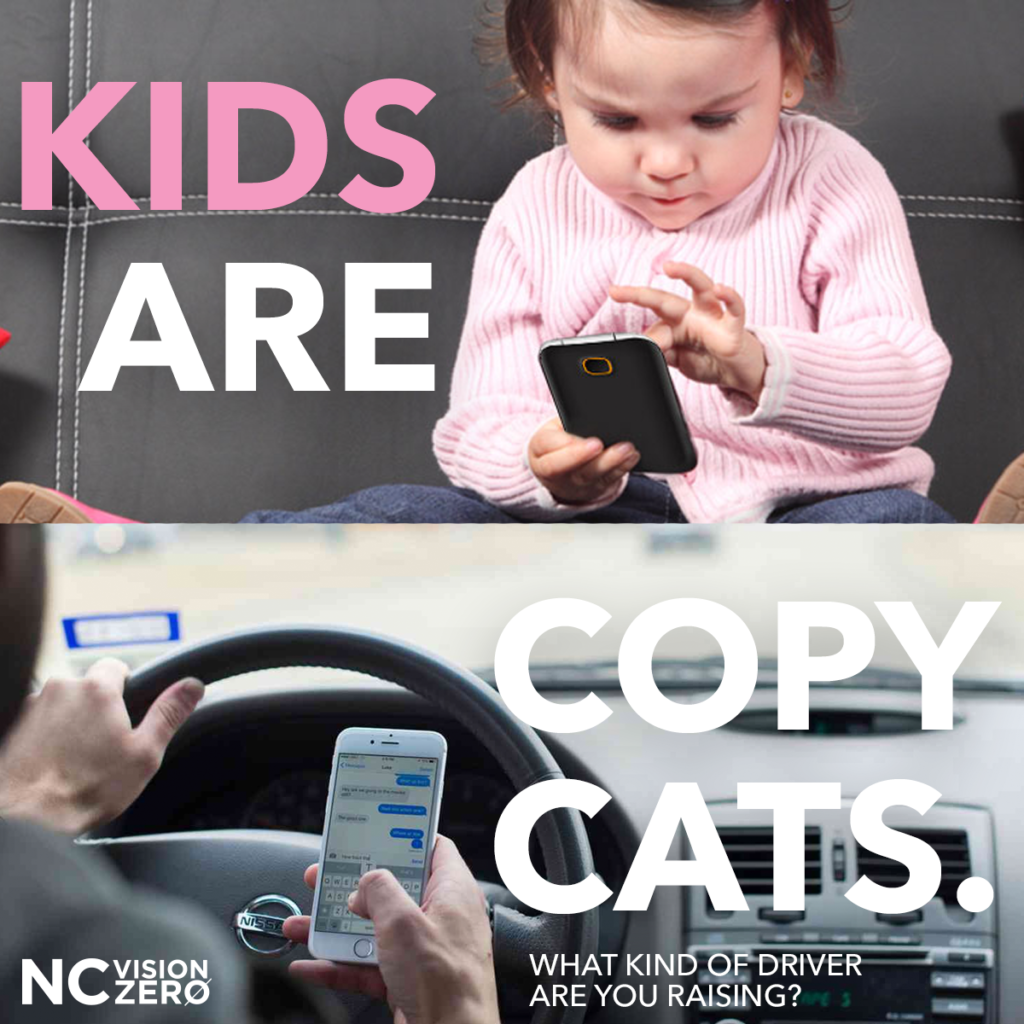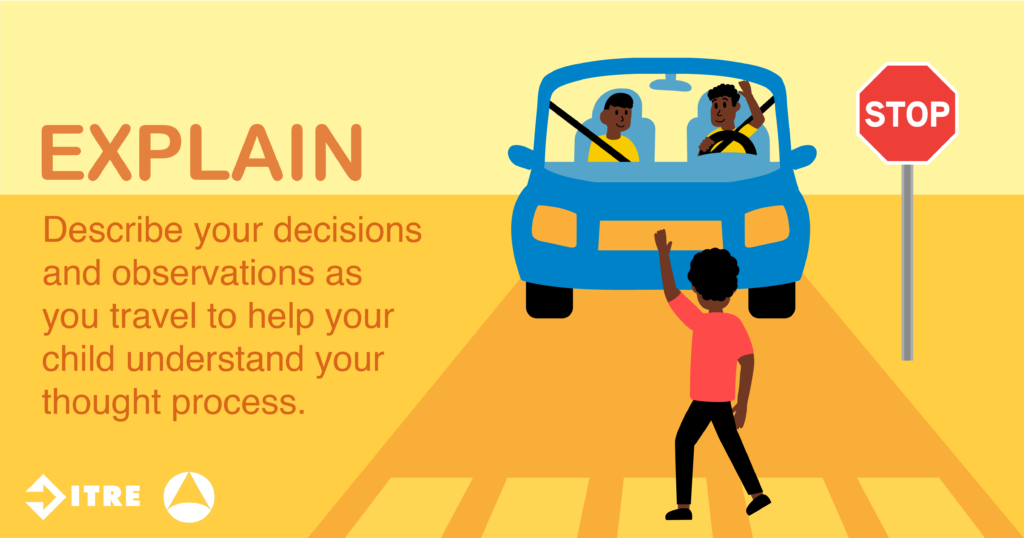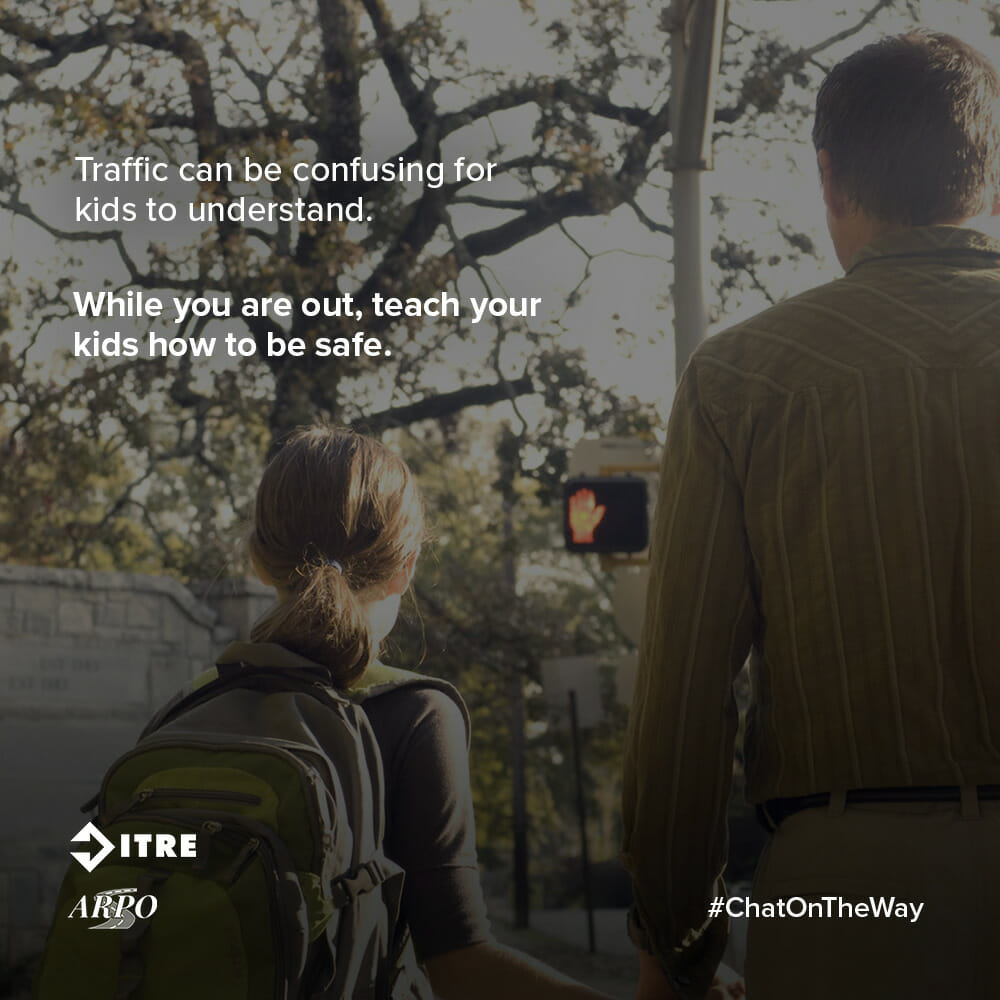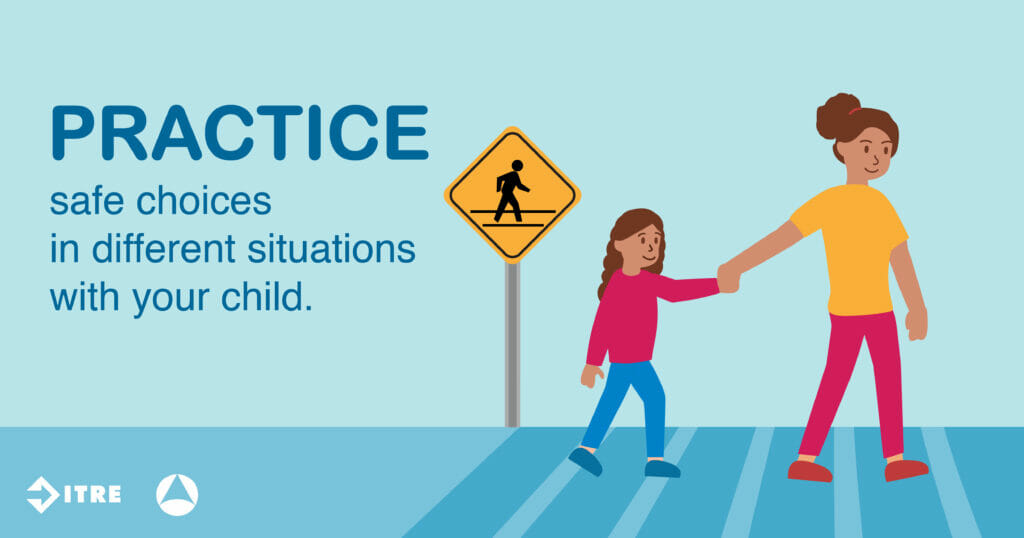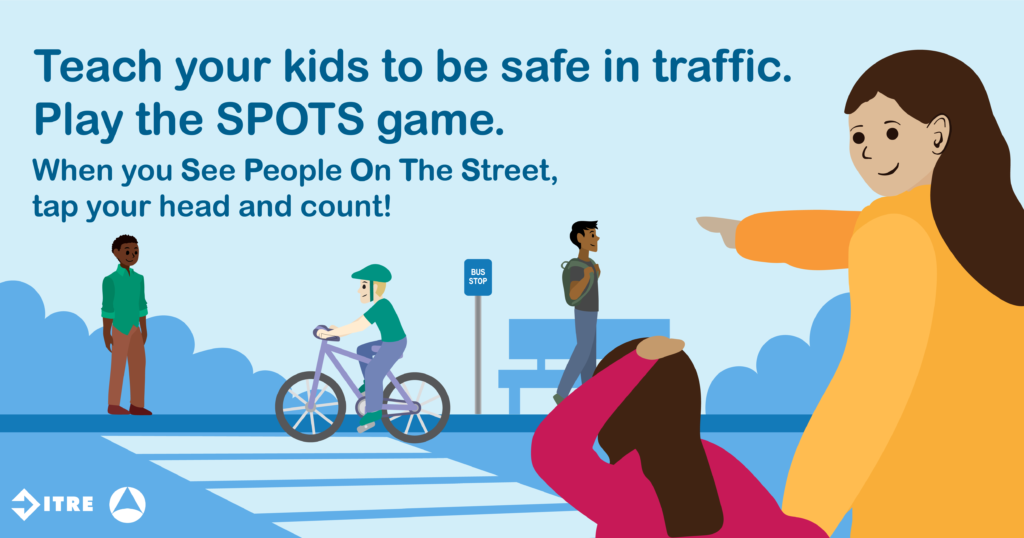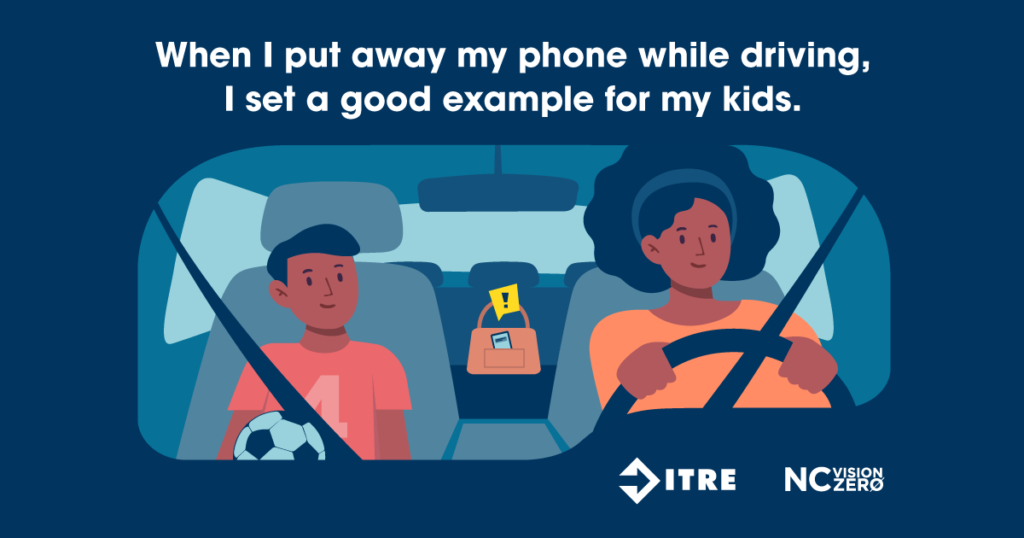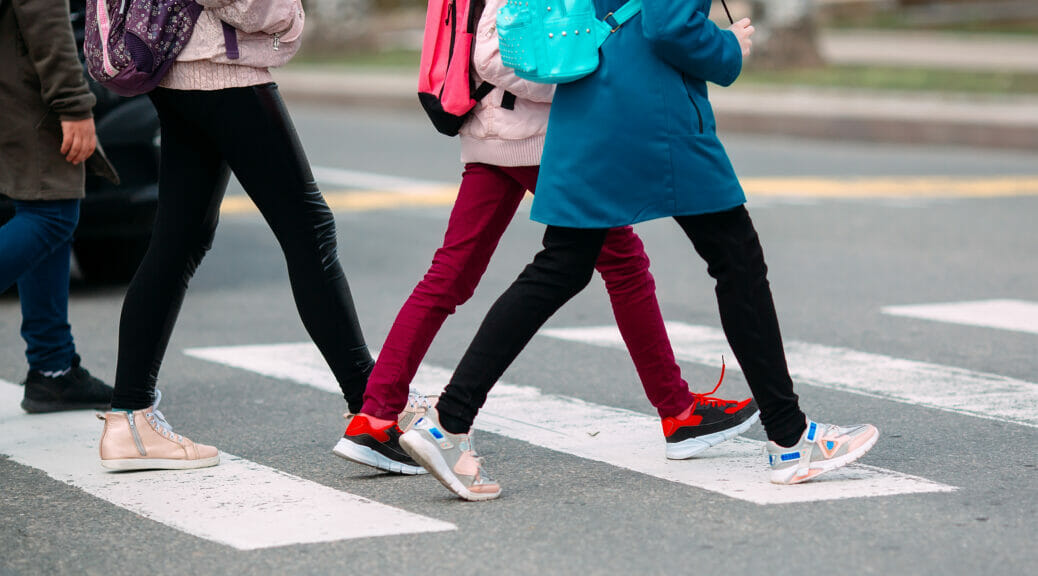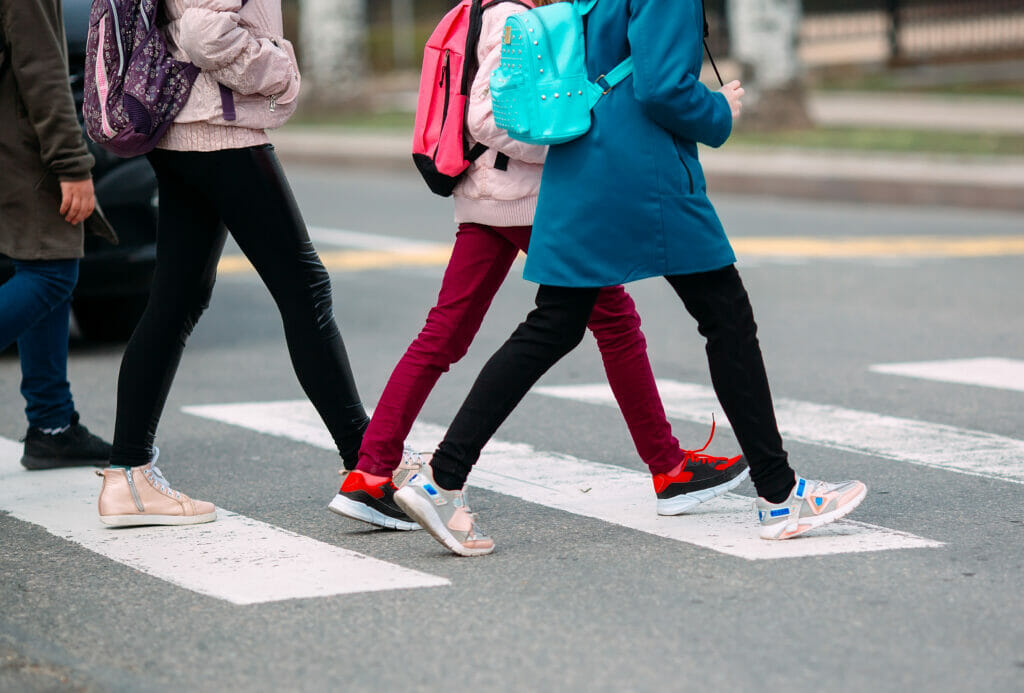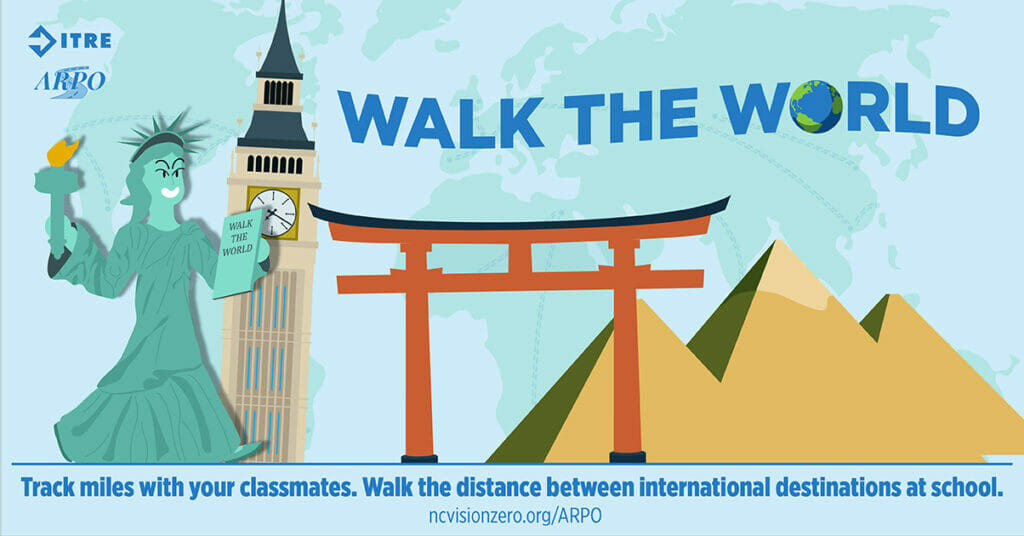Kids Copy Us
Your child looks up to you and absorbs your behavior. That is why it is said that children start learning how to drive from the moment you turn their carseat facing forward!
The good news is that you can help ensure your child is a safe driver years before they get a driver’s license.
By modelling the habits that will keep them safe on the road, you teach them without making it a formal lesson.
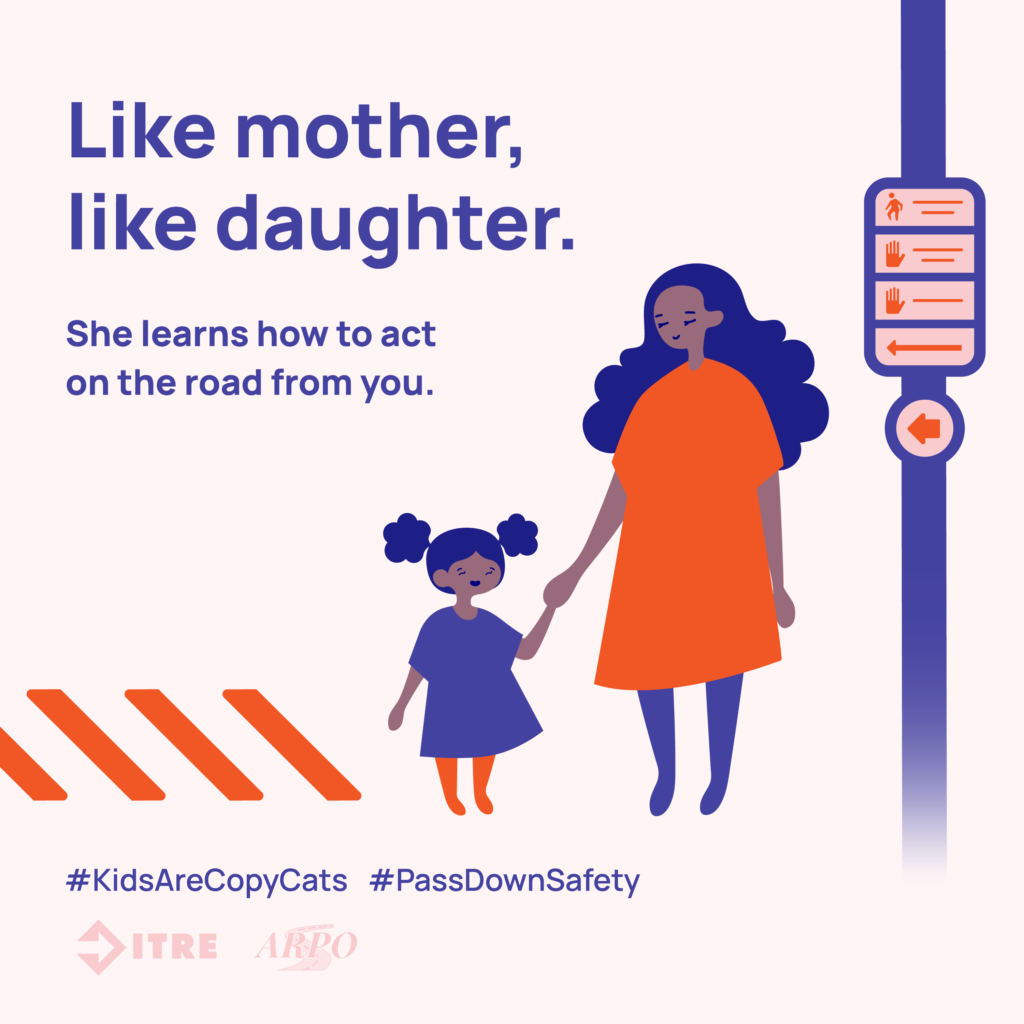
Even very young children notice your behaviors when you travel. Help them to absorb safety habits by showing them the right things to do around traffic.
Explain your Thinking Process
As you are traveling, explain your decisions by using I statements. For example:
“Oh look, the cars way up there are braking. I will slow down too.”
“Since it’s raining, it may be hard for people to see this car. I’m going to put on my headlights so they can see us.”
“There’s a pedestrian at that crosswalk! I’m going to stop and wave at her so she can cross safely.”
“That big truck may not be able to see my car, so I’m going to give it plenty of space.”

Imagine your Child with a Driver’s License
Even if your child will not start driving for another decade, he is already learning how to drive by watching you. If he spent years watching you text and drive, what do you think he will do once he gets his license? If the driving example in your family includes speeding, do you think he will follow the speed limit?
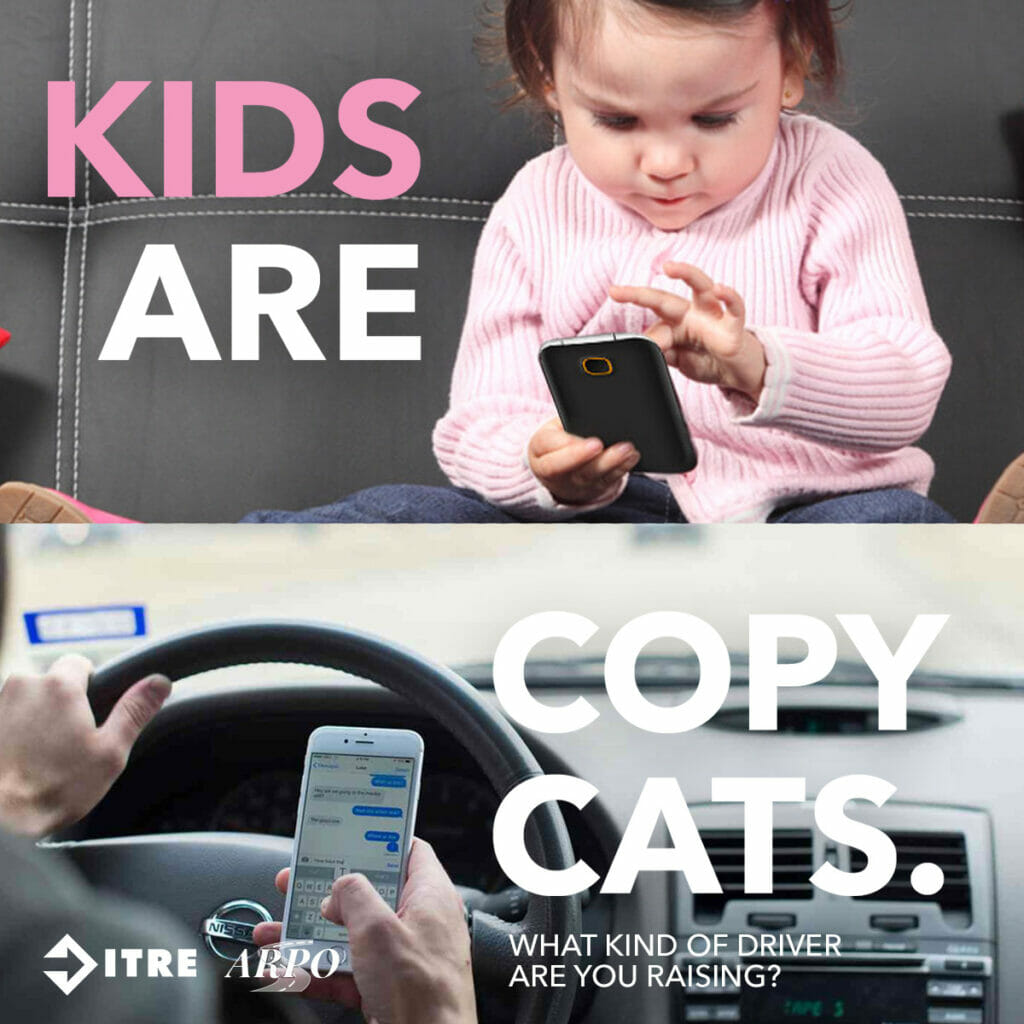
Make a Family Commitment
Discuss safety rules with your family and commit to them together.
Download Family Traffic Safety Contract
Give your children permission to remind you of that commitment if they catch you doing something unsafe. By keeping each other accountable, your child will also learn how to speak up and advocate for her safety in other situations.
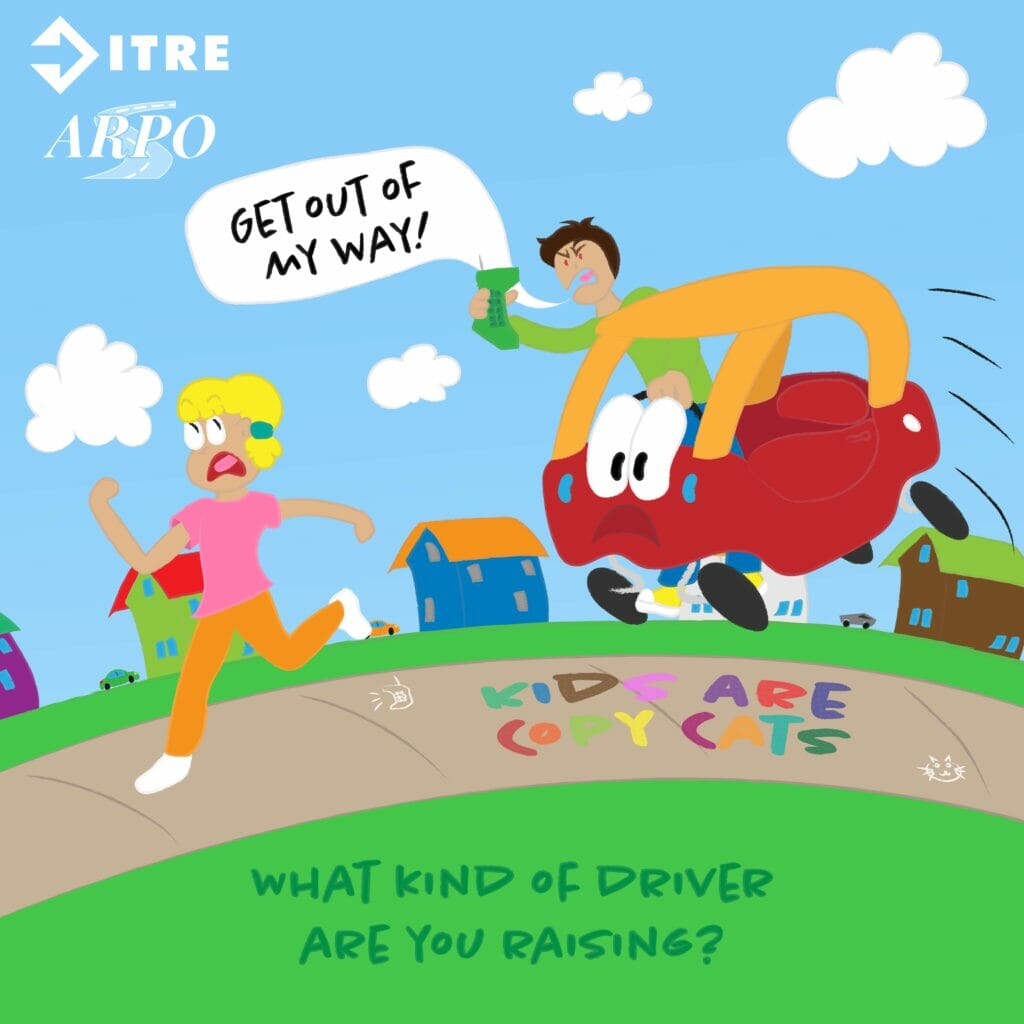
Want to learn more?
4 Things You Can Do to Raise Traffic-Safe Kids
